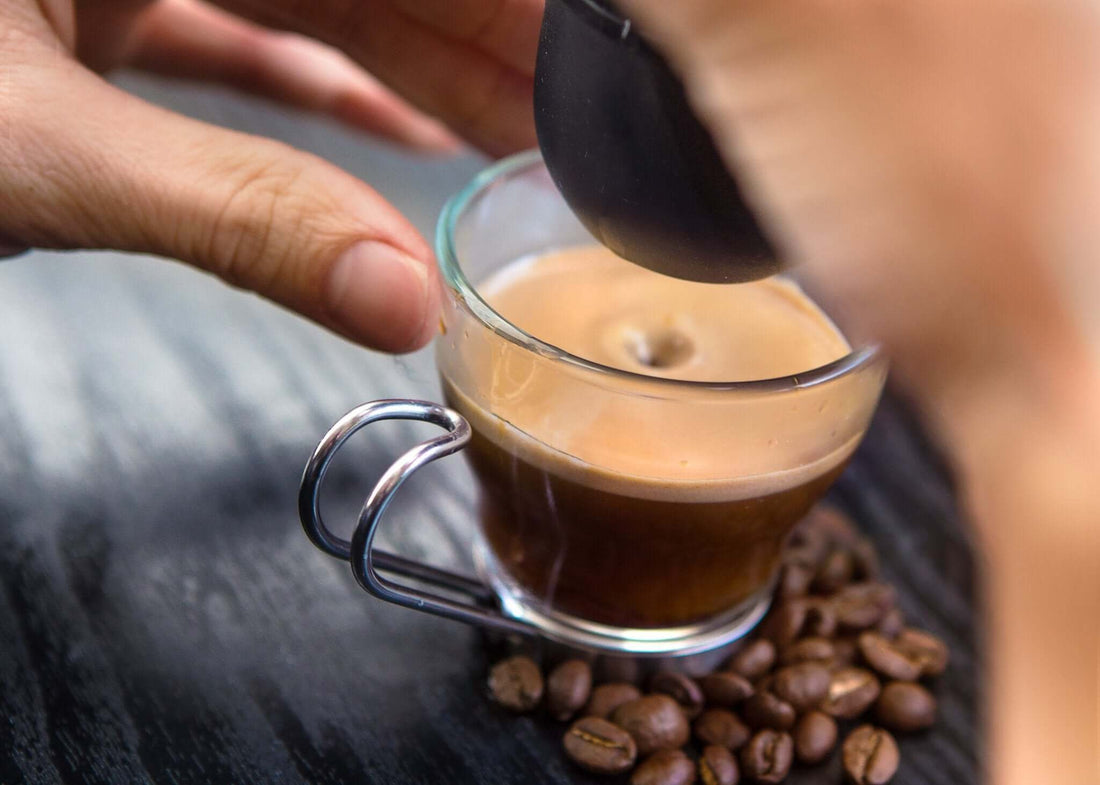Crema SCIENCE
Ever wondered why crema happens?
When coffee beans are roasted, CO2 is a byproduct that builds up and is retained within the beans' cells. Grinding the beans exposes the CO2 in those cells. Since this CO2 can be lost over time it’s best to store pre-ground coffee in a vacuum sealed container, or always brew it immediately after grinding. This will ensure the best, most foamy crema.
 When hot water permeates the coffee grinds, the water reacts and becomes supersaturated with CO2. The higher the atmospheric pressure (bars) applied to the grounds, the more prominent this affect is. Which is why you get crema in an espresso, but not in drip coffee. The proteins and melanoidins in coffee are hydrophobic, which essentially means they rise to the top and bind to air as opposed to water, they actually repel water. This reaction creates the delicious crema we all know and love that rises to the top of a perfectly poured espresso. Crema is important because it enhances the flavor and appeals to your olfactory senses, much like aerating a fine wine, this essentially introduces air to parts of the coffee allowing you to taste and smell much more intricate variances in the actual espresso.
When hot water permeates the coffee grinds, the water reacts and becomes supersaturated with CO2. The higher the atmospheric pressure (bars) applied to the grounds, the more prominent this affect is. Which is why you get crema in an espresso, but not in drip coffee. The proteins and melanoidins in coffee are hydrophobic, which essentially means they rise to the top and bind to air as opposed to water, they actually repel water. This reaction creates the delicious crema we all know and love that rises to the top of a perfectly poured espresso. Crema is important because it enhances the flavor and appeals to your olfactory senses, much like aerating a fine wine, this essentially introduces air to parts of the coffee allowing you to taste and smell much more intricate variances in the actual espresso.
 Another sensitive parameter is the water temperature. Water that is too cold will produce a sour taste and often a lighter crema color. Water that is too hot will burn the coffee oil, creating dark flecks in the crema and producing bitter tasting coffee. Crema can tell you how good your extraction was, so pay attention to it.
Another sensitive parameter is the water temperature. Water that is too cold will produce a sour taste and often a lighter crema color. Water that is too hot will burn the coffee oil, creating dark flecks in the crema and producing bitter tasting coffee. Crema can tell you how good your extraction was, so pay attention to it.
 Now that you know what crema is, why it happens, and why it’s good, take your Minipresso out for a spin, and get to work on getting that perfect crema!
Now that you know what crema is, why it happens, and why it’s good, take your Minipresso out for a spin, and get to work on getting that perfect crema!


